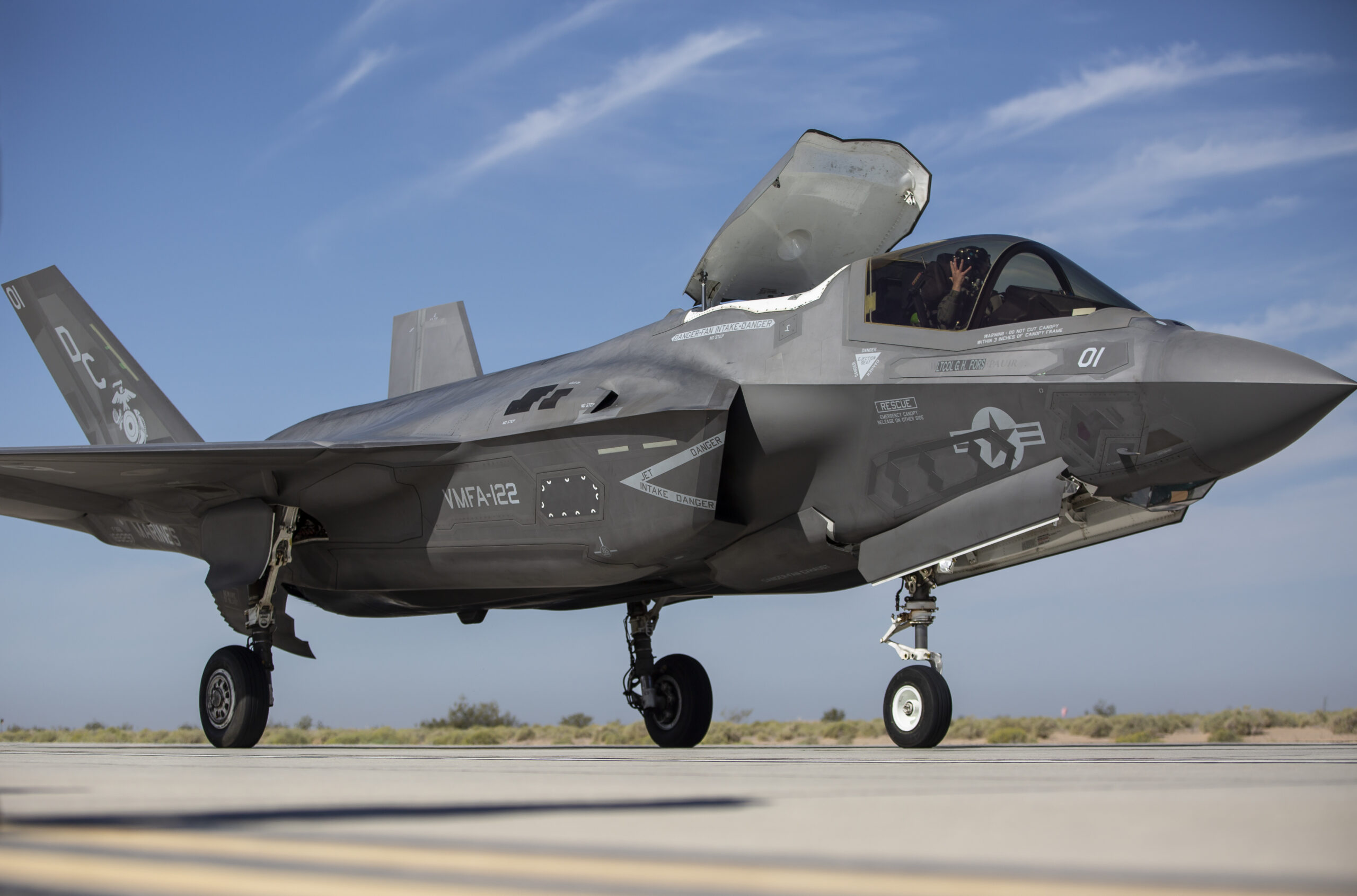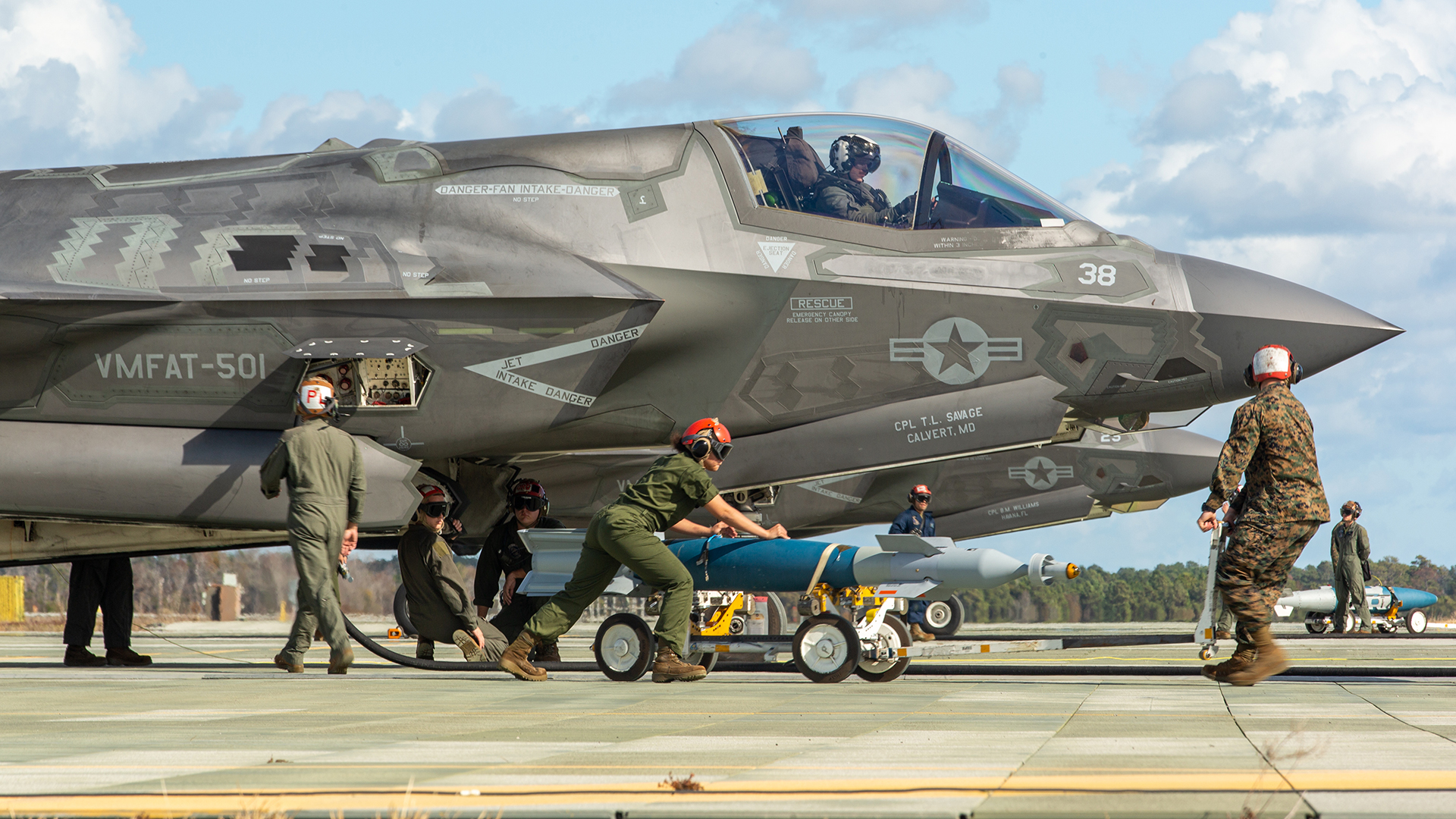The F-35 stealth fighter has finally been cleared for full-rate production, 17 years after the aircraft first took to the air, and almost 23 years after Lockheed Martin won the contract for the Joint Strike Fighter. The decision to move forward, known as Milestone C, is hugely significant for the Joint Strike Fighter program, but it comes at a time in which the U.S. military is not accepting new aircraft, with concerns about the status of the Block 4 upgrades that are seen as a cornerstone of the F-35’s future development potential.
The memo approving the Milestone C decision was signed yesterday by William LaPlante, the undersecretary of defense for acquisition and sustainment, according to the Pentagon. LaPlante chairs the Defense Acquisition Board, which had met on March 7 to consider whether the F-35 was ready for full-rate production.

“This is a major achievement for the F-35 program,” LaPlante said in the statement. “This decision — backed by my colleagues in the department — highlights to the services, F-35 cooperative program partners, and Foreign Military Sales customers that the F-35 is stable and agile, and that all statutory and regulatory requirements have been appropriately addressed.”

The full-rate production decision for the F-35 came more than four years later than had been planned, and this timeline had been pushed to the right multiple times before that. The primary reason for the latest holdup was delays with the so-called Joint Simulation Environment tests, which were designed to put all three versions of the aircraft through a range of realistic and complex scenarios, designed to replicate real-world operations.
Running to 64 test points, the Joint Simulation Environment tests were finally wrapped up at Naval Air Station Patuxent River in Maryland, last September 21.
In the meantime, 1,000 F-35s have been built for the U.S. Air Force, Navy, and Marine Corps, as well as foreign customers.

While the numbers involved were impressive, there remained concern within the Pentagon that the Joint Strike Fighter enterprise was falling short in important areas. The aircraft’s manufacturing process, performance and reliability, and its sustainment and support systems were all flagged up as areas that needed to be addressed ahead of Milestone C.
“The F-35 enterprise has made significant improvements over the last decade, and we will always be driven to continuously improve sustainability, interoperability, and lethality so warfighters have the capability needed to fight and win when called to do so,” F-35 program executive officer Lt. Gen. Mike Schmidt said. “Moreover, the program and our great people can now focus on the future of the F-35 instead of the past.”

While the Pentagon now says it’s confident that the Joint Strike Fighter program can “efficiently produce and deliver the next generation” of aircraft, the situation on the ground is a little more complex.
The latest accomplishment is overshadowed somewhat by the ongoing saga surrounding the development and testing of the Tech Refresh-3 (TR-3) hardware configuration. This is a set of hardware and software changes that effectively underpin the F-35’s future capabilities, known collectively as Block 4.
With ongoing delays to TR-3, completed F-35s are being parked as soon as they come off the production line and are not being delivered, until they receive these new features.

In January, just after Lockheed Martin announced it had completed the 1,000th F-35, the company provided The War Zone with the following statement:
“We continue to produce F-35s at rate and have jets in various stages of the final production process. Once these jets receive the necessary TR-3 hardware and final TR-3 software is available, they will continue through the production process, including parking until they are delivered.”
The first flight of an F-35 test jet with a version of the TR-3 backbone took place in January 2023. Since then, however, efforts to create a dedicated TR-3 test force have been hampered by the increasing age of current test jets and limitations relating to other test infrastructure, especially software labs on the ground, among other issues.
Once Block 4 comes online, it will give the F-35 advanced new capabilities, including much-expanded processing power, new displays, enhanced cooling, new EOTS and DAS electro-optical sensors, and a host of additional weapons that will greatly help the aircraft reach its potential. Perhaps most significant are the F-35’s new radar and electronic warfare suite. The head of Air Combat Command has even gone on record to say that the electronic warfare aspect is the biggest advantage associated with Block 4.

There’s no doubt that Block 4 promises to bring some major capability enhancements to the F-35 and is eagerly awaited. But for the time being it’s being held up by issues with TR-3, which has and continues to suffer numerous delays in its development as well as contributing to significant cost overruns.
Meanwhile, global demand for the F-35 continues to grow, driven by recent geopolitical events and new and emerging threats. This has seen a spike in customers for the Joint Strike Fighter, including some that would have been considered unlikely candidates just a couple of years ago.

Back in December, it was expected that the development of TR-3 would be completed sometime between April and June of this year, according to Defense News. After that, the TR-3 enhancements will still need to be incorporated into the existing jets, which will take yet more time.
In January, Lockheed Martin said it didn’t expect F-35 deliveries to resume until late this summer, but the company also confirmed that the Joint Program Office and F-35 partners were considering accepting jets before then, without the fully validated TR-3 hardware and software. The status of this possible workaround is not currently clear.
Separate from TR-3, the F-35 program is working on upgrades to the Pratt & Whitney F135 engines that power all variants of the Joint Strike Fighter, as well as power and thermal management systems. These will also be critical for enabling Block 4 capabilities but the engine issue has also been controversial, as you can read more about here.

All these factors don’t seem to have had much impact on foreign interest in the F-35. Indeed, with a scaling back of U.S. Air Force orders in the coming fiscal cycle, international customers are likely to get their aircraft quicker, taking up newly freed slots on the production line in the short term. Long-term, the U.S. Air Force says that there is no change to how many F-35As it ultimately plans to acquire in total.
With the Lockheed Martin line already working to near full capacity, the Milestone C decision also won’t likely see a dramatic change in the number of jets coming out of the factory. Currently, the production rate is around 150 aircraft annually.
Even with the current hiatus on F-35 deliveries, few would bet against the F-35 securing more customers. With that in mind, the full-rate production decision will only further cement the fifth-generation fighter’s popularity.
Contact the author: thomas@thewarzone.com
